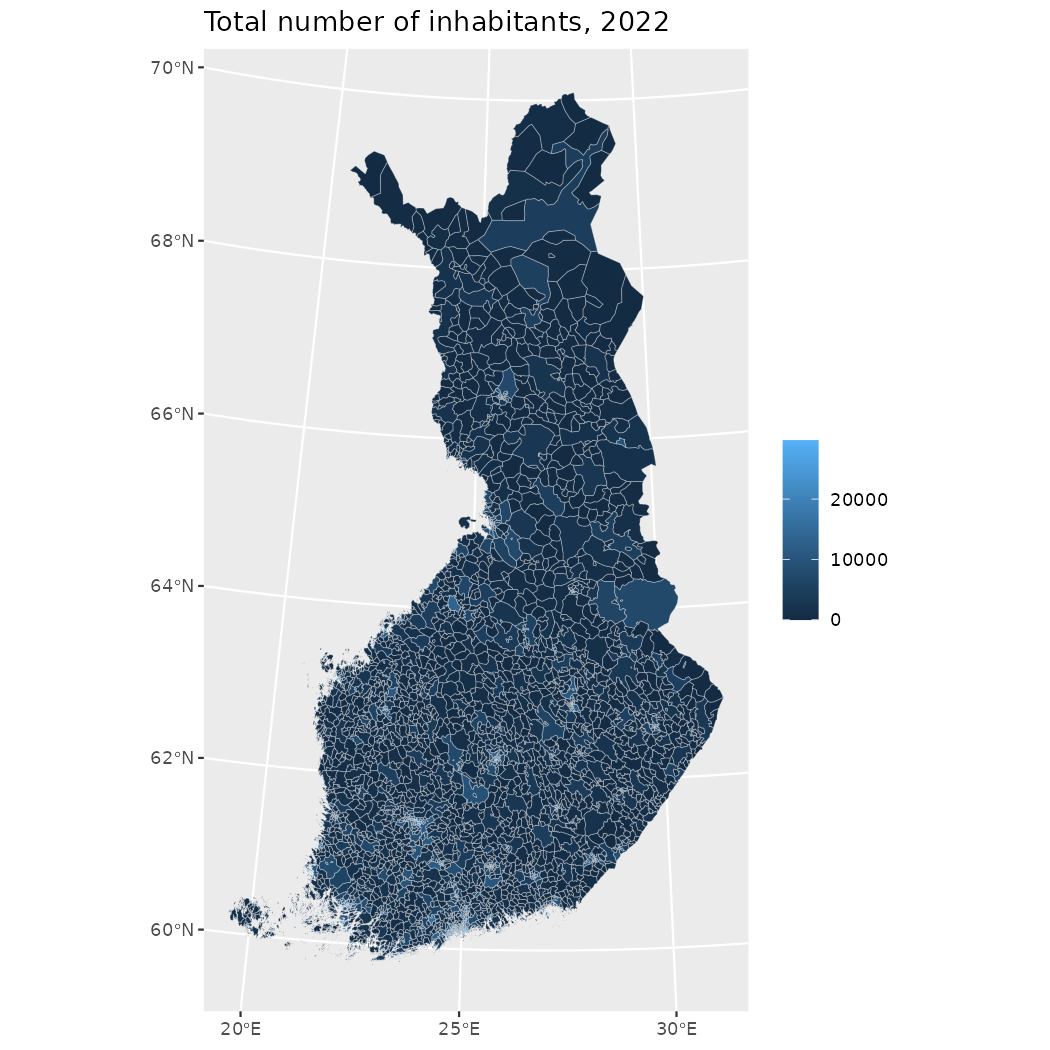
Joining attribute data with geofi data
Markus Kainu
2025-05-05
Source:vignettes/geofi_joining_attribute_data.Rmd
geofi_joining_attribute_data.RmdThis vignettes provides few examples on how to join attribute data from common sources of attribute data. Here we are using data from THL Sotkanet and Paavo (Open data by postal code area).
Installation
geofi can be installed from CRAN using
# install from CRAN
install.packages("geofi")
# Install development version from GitHub
remotes::install_github("ropengov/geofi")Municipalities
Municipality data provided by
get_municipalities()-function contains 77 indicators
variables from each of 309 municipalities. Variables can be used either
for aggregating data or as keys for joining attribute data.
Population data from Sotkanet
In this first example we join municipality level indicators of
Swedish-speaking population at year end from Sotkanet population data,
Dataset is provided as part of geofi package as
geofi::sotkadata_swedish_speaking_pop.
library(geofi)
muni <- get_municipalities(year = 2023)
library(dplyr)
sotkadata_swedish_speaking_pop <- geofi::sotkadata_swedish_speaking_popThis is not obvious to all, but have the municipality names in
Finnish among other regional breakdowns which allows us to combine the
data with spatial data using
municipality_name_fi-variable.
map_data <- right_join(muni,
sotkadata_swedish_speaking_pop,
by = c("municipality_code" = "municipality_code"))Now we can plot a map showing
Share of Swedish-speakers of the population, % and
Share of foreign citizens of the population, % on two
panels sharing a scale.
library(ggplot2)
map_data |>
ggplot(aes(fill = primary.value)) +
geom_sf() +
labs(title = unique(sotkadata_swedish_speaking_pop$indicator.title.fi)) +
theme(legend.position = "top")
Zipcode level
You can download data from Paavo
(Open data by postal code area) using pxweb-package.
In this example we use dataset that can be downloaded preformatted in
csv format directly from Statistics Finland. Population
data is provided as part of geofi package as
geofi::statfi_zipcode_population.
statfi_zipcode_population <- geofi::statfi_zipcode_populationBefore we can join the data, we must extract the numerical postal
code from postal_code_area-variable.
# Lets join with spatial data and plot the area of each zipcode
zipcodes19 <- get_zipcodes(year = 2019)
zipcodes_map <- left_join(zipcodes19,
statfi_zipcode_population)
ggplot(zipcodes_map) +
geom_sf(aes(fill = X2022),
color = alpha("white", 1/3)) +
labs(title = "Total number of inhabitants, 2022",
fill = NULL)